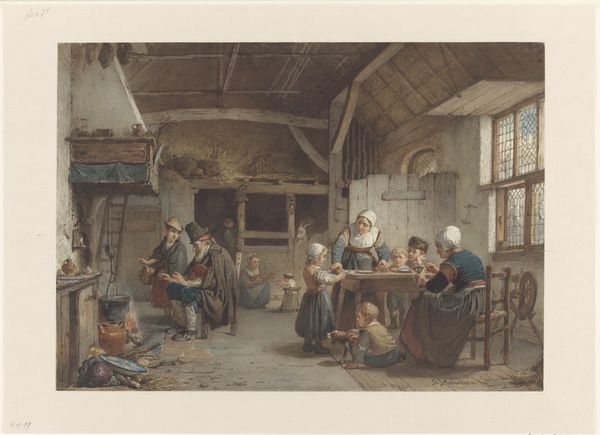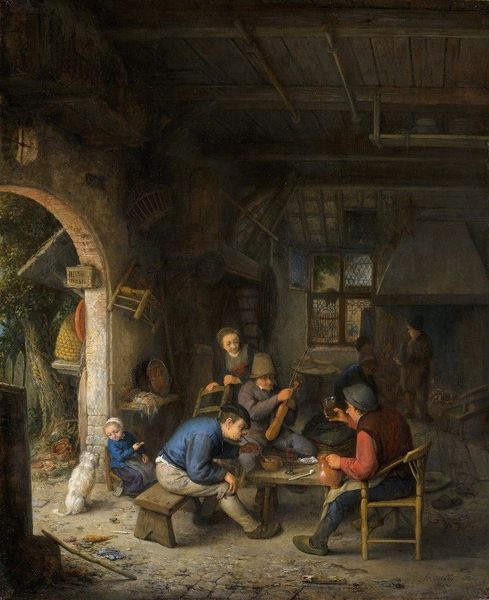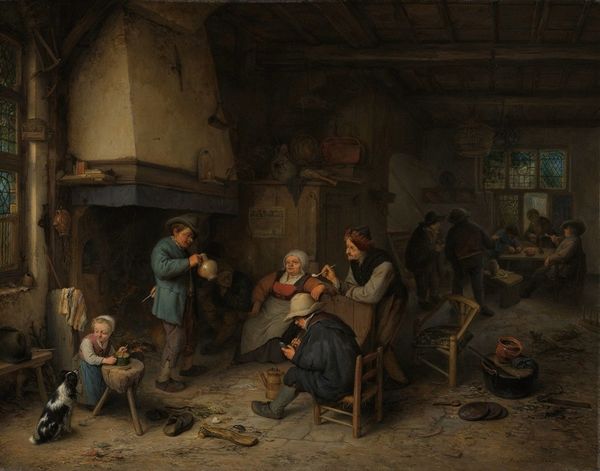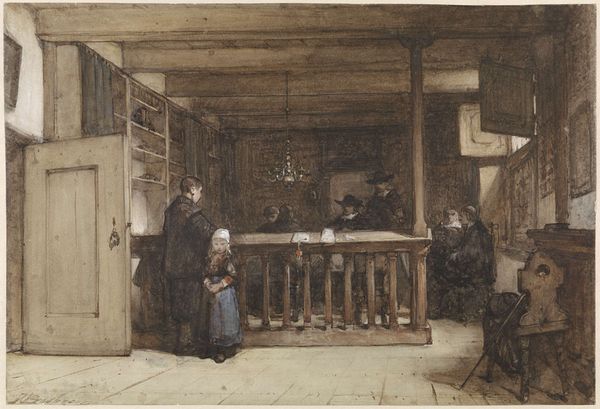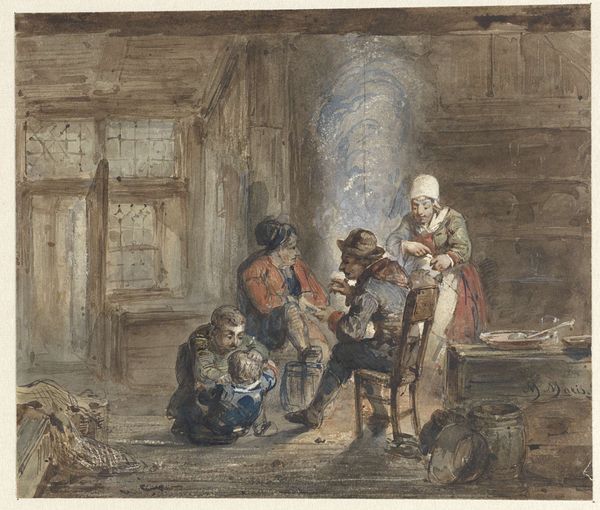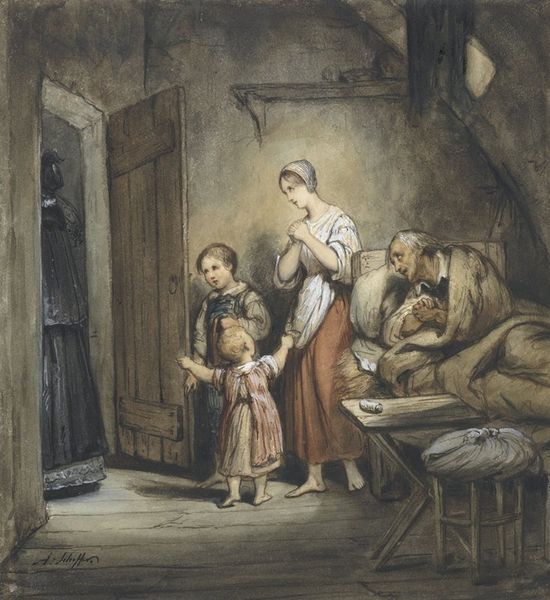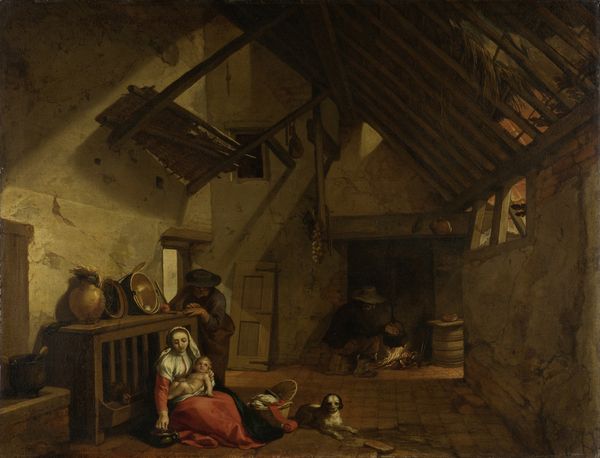
#
figurative
#
toned paper
#
character art
#
incomplete sketchy
#
character sketch
#
coloured pencil
#
underpainting
#
painting painterly
#
watercolour illustration
#
watercolor
#
warm toned green
Copyright: Public Domain: Artvee
Curator: Welcome. Before us is Adriaen van Ostade’s 1673 artwork, “Reading the News at the Weavers’ Cottage.” It’s rendered in watercolour and coloured pencil. Editor: It has an air of worn domesticity. The light is soft, but also a bit dismal. The color palette is dominated by muted greens, greys, and browns, evoking this palpable sense of hardship. Curator: Ostade’s meticulous attention to the details of the cottage's construction – the worn wood, the hanging implements – tells us much about the weaver's life and his means of production. The materials speak of utility. The bare minimum required for working. Editor: But the focus on the man reading… given the time, this couldn't have been passive. Reading news meant engagement, the potential for resistance, however small. It inserts the domestic space into a wider political sphere. Weaving, in this instance, is placed adjacent to public consciousness. Curator: And yet the very act of creating art—even art depicting poverty—raises the issue of art's status as a luxury commodity. Were these weavers patrons, or just subjects? Who was the intended audience for this portrayal of labor? Editor: Precisely! Consider the position of the woman feeding the child: domestic labour intersecting with the looming presence of the printed word. It reminds us that those who weave the fabric of society—literally and figuratively—are frequently relegated to its margins in the telling of history. Who controls the story controls the narrative, right? Curator: Right, and yet Ostade’s mastery is apparent in the handling of the watercolor. It’s a study in subtle underpainting that suggests immense hours dedicated to portraying this humble dwelling. Ostade’s time equals monetary investment, revealing a system in which depictions of working class life circulate as commodities divorced from the labour that underpins them. Editor: Still, seeing a glimpse into these lives, especially during an era of war and upheaval, emphasizes the endurance of everyday rituals within revolutionary times. Curator: It's certainly a window into both past realities and the economics of artistic production itself. Editor: Yes, offering us so much to consider regarding those depicted, and by whose hand they are remembered.
Comments
No comments
Be the first to comment and join the conversation on the ultimate creative platform.




